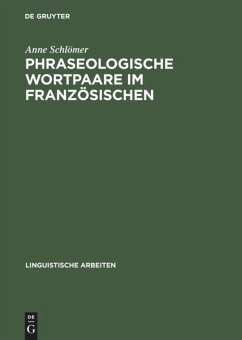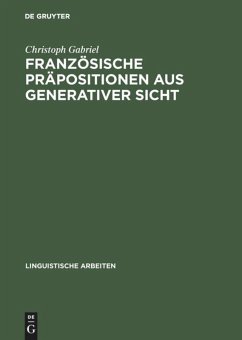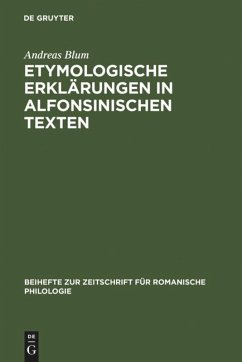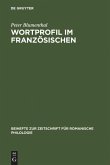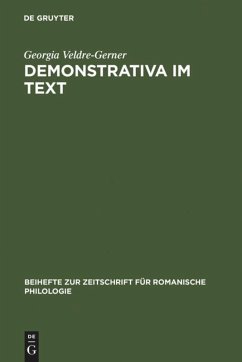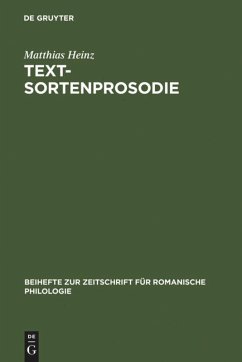On the basis of a corpus of 273 cases, the study examines phraseological pair formations in standard present-day French, such as de fil en aiguille or au fur et à mesure, for the features that constitute and structure them. The heart of the study is a classification of idiomatic meaning formation according to types. Characteristic phonological and morphological aspects are discussed, and the study also indicates formal and semantic principles that prove to be co-determinant for the order of the components in two-part idiomatic expressions.
Auf der Grundlage eines Korpus von 273 Fällen werden phraseologische Paarbildungen der französischen Gegenwartssprache, z.B. corps et bien oder de fil en aiguille, untersucht. Während ihre morphologische Strukturierung sich als gut einsichtig erweist, wirft die semantische Analyse, das Kernstück der Arbeit, die Frage auf, in welchem Zusammenhang die wörtlichen Bedeutungen mit der idiomatischen Gesamtbedeutung stehen. Hier ergeben sich vier Typen: nicht idiomatische Wortpaare; eine interne Gesamtbedeutung, die übertragen wird; semantische Disparität bei Übertragung der syntagmatischen Beziehung; letztlich Konstitution einer idiomatischen Gesamtbedeutung durch Übertragung der Einzelglieder. Daneben spielen formale stilistische Aspekte wie Alliterationen oder Reime eine eher unterstützende Rolle. Einen weiteren Schwerpunkt bildet die Frage der Reihenfolge der Glieder in zweigliedrigen Fügungen. Neben phonetischen Prinzipien erweist sich die ansteigende Wortkomplexität als wichtigstes Prinzip. Aber auch semantische Gesichtspunkte wie Egozentrik oder soziale Hierarchien sind bei der Wortfolge mit bestimmend. Hier weitet sich der Blick auf die Frage nach dem ikonischen Charakter von Phraseologismen, der bezüglich der Abbildung hierarchischer oder chronologischer Verhältnisse augenfällig ist.
Auf der Grundlage eines Korpus von 273 Fällen werden phraseologische Paarbildungen der französischen Gegenwartssprache, z.B. corps et bien oder de fil en aiguille, untersucht. Während ihre morphologische Strukturierung sich als gut einsichtig erweist, wirft die semantische Analyse, das Kernstück der Arbeit, die Frage auf, in welchem Zusammenhang die wörtlichen Bedeutungen mit der idiomatischen Gesamtbedeutung stehen. Hier ergeben sich vier Typen: nicht idiomatische Wortpaare; eine interne Gesamtbedeutung, die übertragen wird; semantische Disparität bei Übertragung der syntagmatischen Beziehung; letztlich Konstitution einer idiomatischen Gesamtbedeutung durch Übertragung der Einzelglieder. Daneben spielen formale stilistische Aspekte wie Alliterationen oder Reime eine eher unterstützende Rolle. Einen weiteren Schwerpunkt bildet die Frage der Reihenfolge der Glieder in zweigliedrigen Fügungen. Neben phonetischen Prinzipien erweist sich die ansteigende Wortkomplexität als wichtigstes Prinzip. Aber auch semantische Gesichtspunkte wie Egozentrik oder soziale Hierarchien sind bei der Wortfolge mit bestimmend. Hier weitet sich der Blick auf die Frage nach dem ikonischen Charakter von Phraseologismen, der bezüglich der Abbildung hierarchischer oder chronologischer Verhältnisse augenfällig ist.

